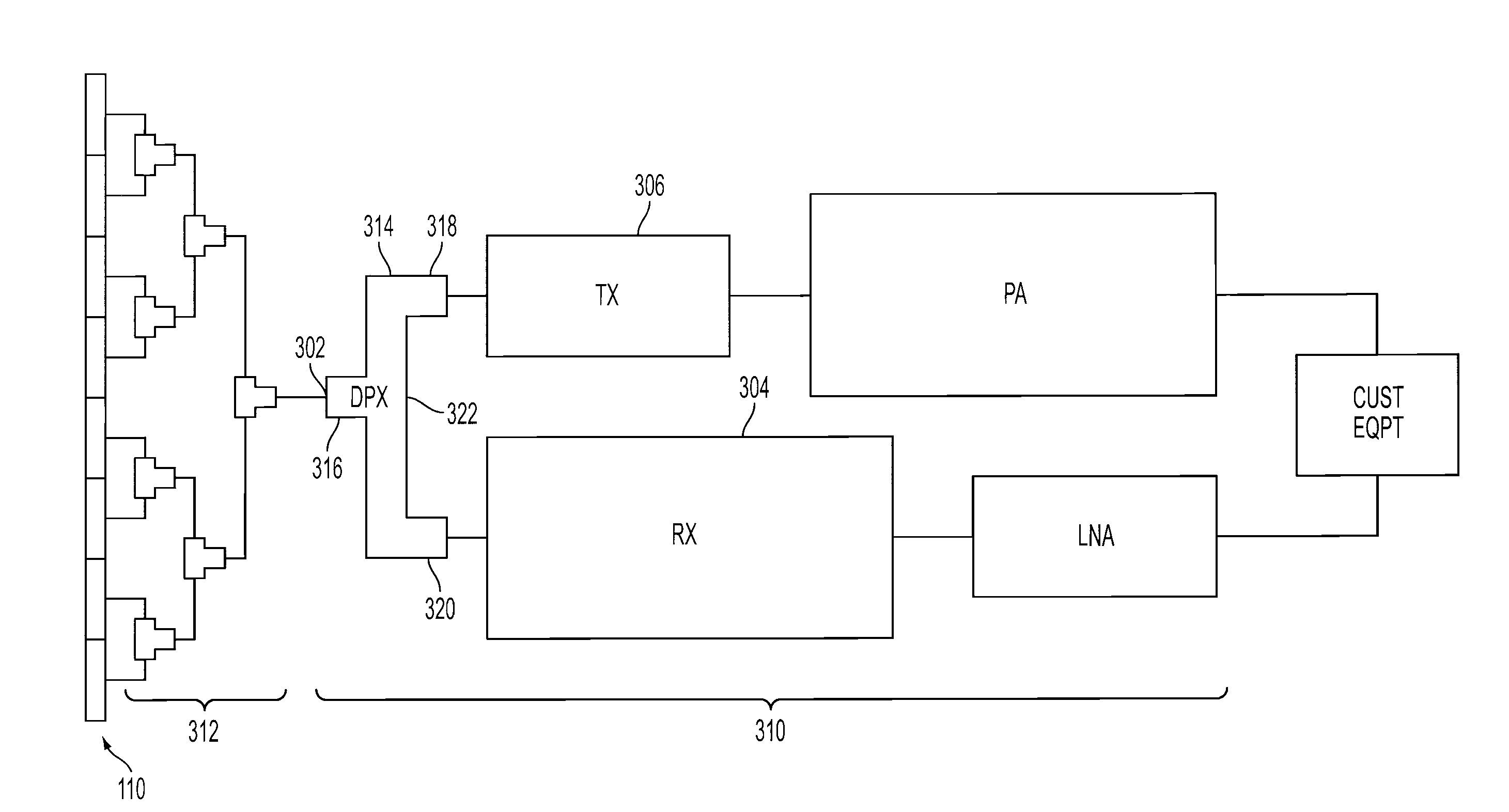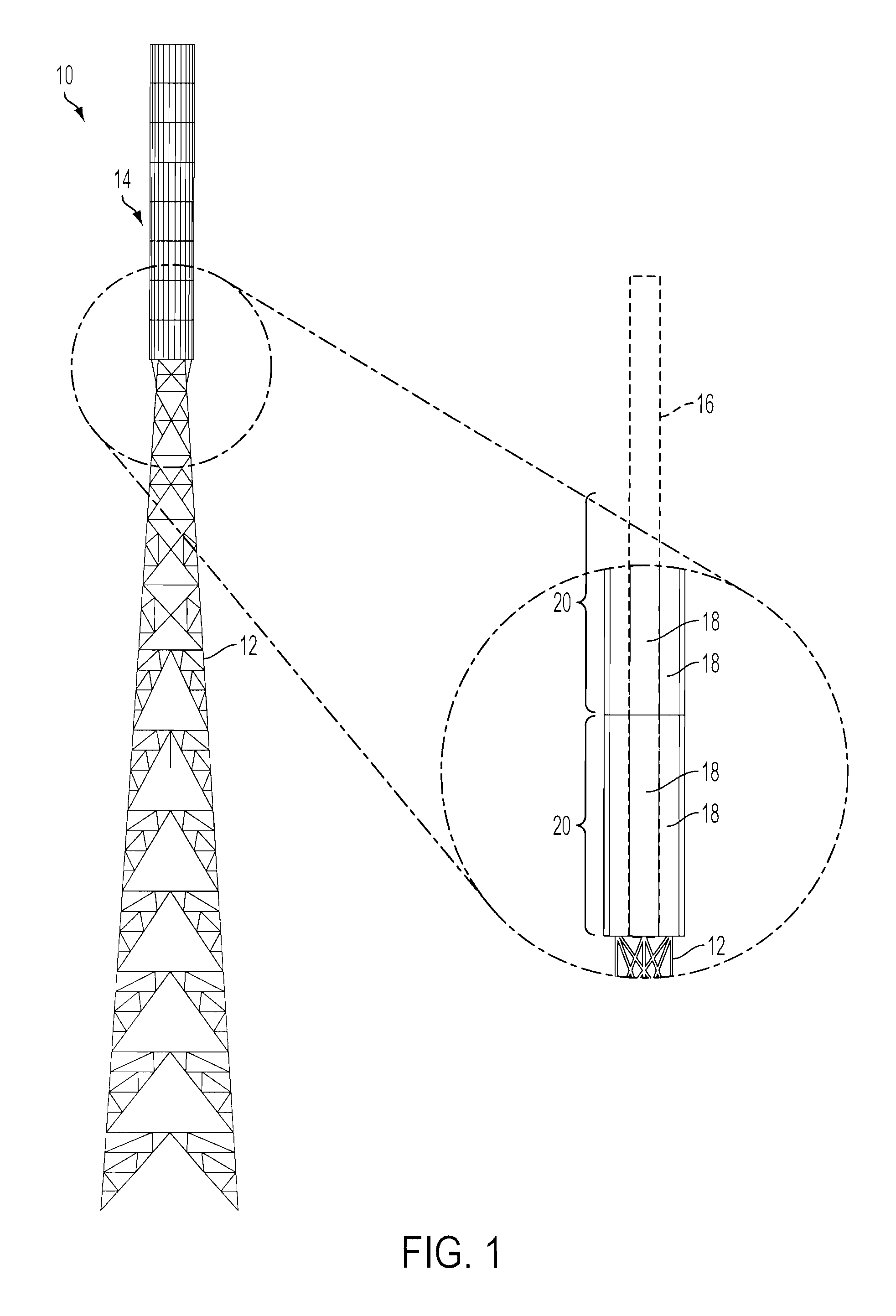Phased-Array Antenna Filter and Diplexer for a Super Economical Broadcast System
a filter and phasedarray technology, applied in the field of cellular communication systems, can solve the problems of reducing the capital cost associated with cellular infrastructure deployment, the number of customers to be served, and the solution of conventional cellular network operators
- Summary
- Abstract
- Description
- Claims
- Application Information
AI Technical Summary
Benefits of technology
Problems solved by technology
Method used
Image
Examples
Embodiment Construction
[0016]Embodiments of the present invention provide a phased-array antenna filter and diplexer for a super economical broadcast system.
[0017]According to one aspect of the present invention, cell spacing, i.e., the distance between adjacent BTSs, is advantageously increased relative to conventional cellular systems while providing a consistent quality of service (QoS) within each cell. Preferred embodiments of the present invention increase the range of each BTS. Conventional macrocells typically range from about ¼ mile (400 meters) to a theoretical maximum of 22 miles (35 kilometers) in radius (the limit under the GSM standard); in practice, radii on the order of 3 to 6 mi (5-10 km) are employed except in high-density urban areas and very open rural areas. The present invention provides full functionality at the GSM limit of 22 mi, for typical embodiments of the invention, and extends well beyond this in some embodiments. Cell size remains limited by user capacity, which can itself ...
PUM
 Login to View More
Login to View More Abstract
Description
Claims
Application Information
 Login to View More
Login to View More - R&D
- Intellectual Property
- Life Sciences
- Materials
- Tech Scout
- Unparalleled Data Quality
- Higher Quality Content
- 60% Fewer Hallucinations
Browse by: Latest US Patents, China's latest patents, Technical Efficacy Thesaurus, Application Domain, Technology Topic, Popular Technical Reports.
© 2025 PatSnap. All rights reserved.Legal|Privacy policy|Modern Slavery Act Transparency Statement|Sitemap|About US| Contact US: help@patsnap.com



